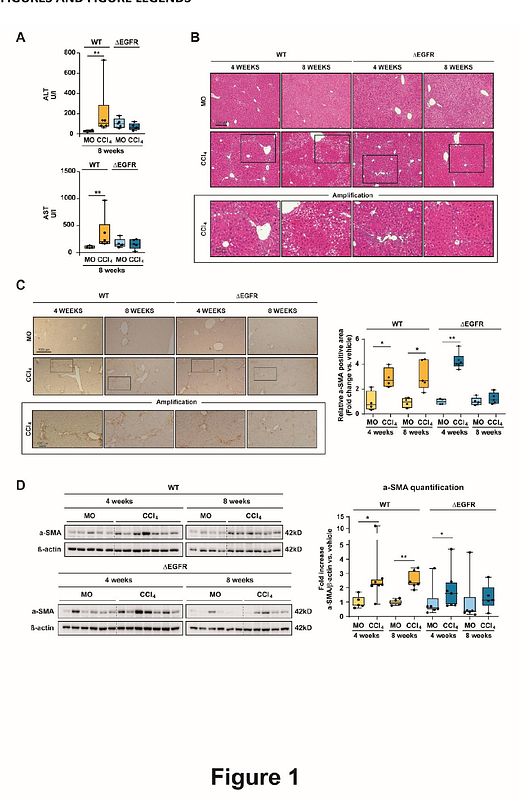The hepatocyte Epidermal Growth Factor Receptor (EGFR) pathway regulates the cellular interactome within the liver fibrotic niche

The hepatocyte Epidermal Growth Factor Receptor (EGFR) pathway regulates the cellular interactome within the liver fibrotic niche
Gonzalez-Sanchez, E.; Vaquero, J.; Caballero-Diaz, D.; Grzelak, J.; Fuste, N. P.; Bertran, E.; Amengual, J.; Garcia-Saez, J.; Martin-Mur, B.; Gut, M.; Esteve-Codina, A.; Alay, A.; Coulouarn, C.; Calero, S.; Valdecantos, P.; Valverde, A. M.; Sanchez, A.; Herrera, B.; Fabregat, I.
AbstractBackground & Aims: Liver fibrosis is the consequence of chronic liver injury in the presence of an inflammatory component. Although the main executors of this activation are known, the mechanisms that lead to the inflammatory process that mediates the production of profibrotic factors are not well characterized. The Epidermal Growth Factor Receptor (EGFR) signaling in hepatocytes is essential for the regenerative process of the liver; however, its potential role in regulating the fibrotic niche is not yet clear. Approach & Results: Our group generated a mouse model that expresses an inactive truncated form of the EGFR specifically in hepatocytes (deltaEGFR mice). Here, we have analyzed the response of WT and deltaEGFR mice to chronic treatment with CCl4. Results indicated that the hallmarks of liver fibrosis were attenuated in CCl4-treated deltaEGFR mice when compared to WT mice, coinciding with a faster resolution of the fibrotic process and an ameliorated damage. The absence of EGFR activity in hepatocytes induced changes in the pattern of immune cells in the liver, with a notable change in the population of M2 macrophages, more related to fibrosis resolution, as well as an increase in the population of lymphocytes related to eradication of the damage. Transcriptomic analysis of hepatocytes and secretome studies from extracellular media in in vitro studies allowed to elucidate the specific molecular mechanisms regulated by EGFR that mediate hepatocyte production of both pro-inflammatory and pro-fibrotic mediators. Conclusions: Our results support a pro-inflammatory and pro-fibrogenic role for the hepatocyte EGFR pathway during chronic liver damage.